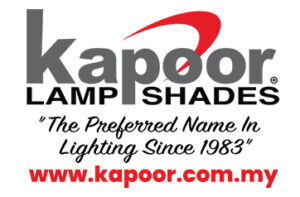enquiry@kapoor.com.my
+60 12-372 8208
+60 12-232 5068
+60 12-273 5088
24/7 Customer Support
Mon - Sat: 09:00 - 19:00
Operating Hours
enquiry@kapoor.com.my
24/7 Customer Support
Operating Hours
LED stands for light emitting diode. An LED is a semiconductor device, generating light through a process called electroluminescence. When you pass an electric current through semiconductor material, it emits visible light. As such, an LED stands in exact contrast to a photovoltaic cell, which is the cell used in solar arrays to convert visible light into electricity.
Here are the top-10 advantages of light emitting diode (LED) lighting technology.
LEDs are efficient and long-lasting. On average, LED can last up to 100,000 operating hours, which is four times longer than what other lighting solutions can offer. Even more, research shows that LED lights can last 40 times more than incandescent bulbs.
These lighting fixtures are uniquely designed to consume less power and offer unmatched luminous efficacy. When correctly installed, the energy savings could be over 90%.
Compared to other lighting options, LEDs emit the least amount of heat. And because they consume less energy, they can operate efficiently on low-voltage electrical systems. This makes them much safer than traditional lighting solutions.
Featuring a compact design, LED bulbs are incredibly adaptable to various lighting applications. They can be utilized in circuit board lighting, modern mood lighting, commercial, as well as, residential applications.
When it comes to lighting, color rendering is an important aspect. Color Rending Index (CRI) typically refers to a light’s ability to showcase the true color of an object. LEDs generally feature a high CRI rating, which makes them an excellent lighting solution.
LEDs are very small (about the size of a spec of pepper). This means that they can be used in almost any application. Remember, their original use was as an indicator light in a circuit board. You can also combine LED bulbs with other small devices in a linear sequence and achieve a certain design in your project.
LED lighting fixtures rely on solid-state lights technology. Thus, you don’t need the traditional glass that usually surrounds the light.
You can operate your LEDs at virtually all levels or percentages. This means that you don’t need specific hardware to dim these lights. It’s important to note that you cannot use traditional equipment for dimming lights when using LEDs. They need hardware that is specific to their technology.
LEDs are highly flexible. You don’t need to manually turn them off and on. They can automatically turn on and off.
LEDs, unlike their fluorescent and mercury vapor lights, don’t have an extremely negative impact on the environment. Remember, mercury can hurt the environment. Also, these bulbs don’t emit any UV emissions, which explains why they are considered eco-friendly lighting solutions.

Kapoor Lamp Shades (M) Sdn Bhd was officially inaugurated in Malaysia on 22nd November 1983 by YB Tan Sri Dato Seri Paduka Rafidah Aziz, then the Minister of Public Enterprises .
We supply a wide range of distinctive quality lightings that lend elegance and charm to homes, offices, hotels, restaurants, places of worship, clubhouses, condominiums, resorts, event halls, lobbies of corporate and government buildings.